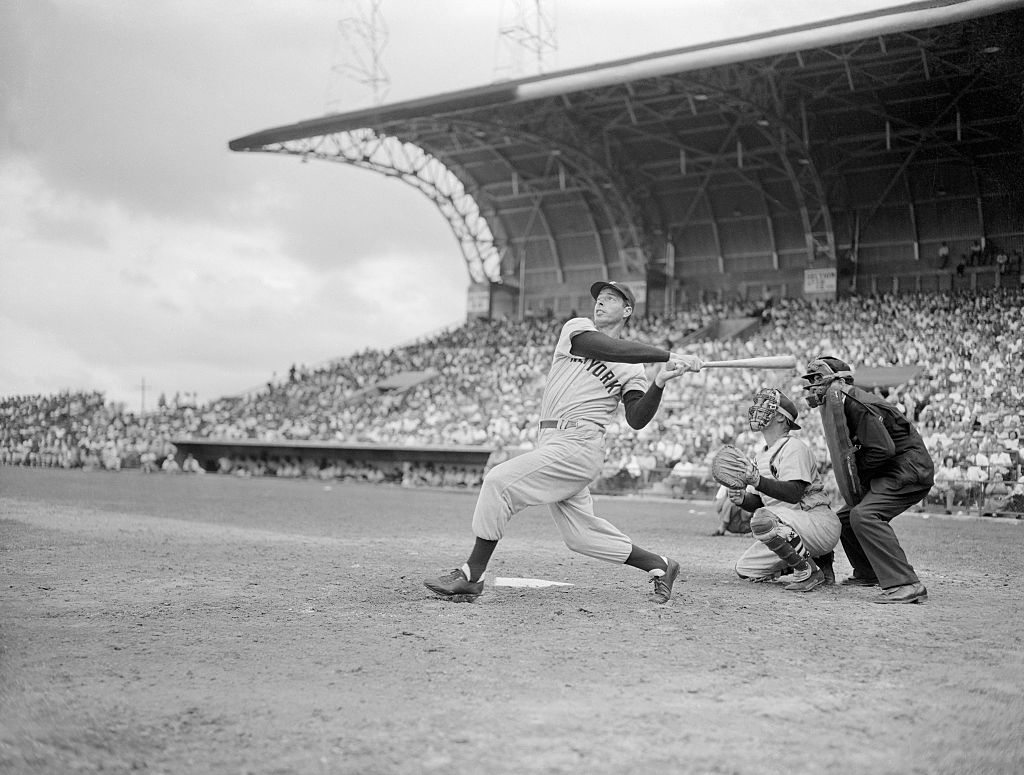Sports
Joe DiMaggio’s Net Worth Swelled to More Than $40 Million After a Chance Encounter

As Frank Sinatra famously sang, if you can make it in New York, you can make it anywhere. That certainly rings true of playing for the Yankees; thriving in the Bronx makes you a legend for life. Look no further than the Yankee Clipper himself, Joe DiMaggio.
Despite his star status, Joltin’ Joe lived humbly for most of his retirement. One chance encounter, however, changed DiMaggio’s life—not to mention his net worth—forever.
Joe DiMaggio’s iconic New York Yankees career
Growing up in California, Joe DiMaggio was expected to follow in his father’s footsteps and become a fisherman. He didn’t care for the smell of the boat, however, and worked a variety of odd jobs while playing semipro baseball in the Pacific Coast League. It was there that he caught the New York Yankees’ attention.
DiMaggio joined the Bronx Bombers in 1936 and immediately slotted into the lineup ahead of Lou Gehrig. The outfielder made an impact at the plate—he held the club record for home runs as a rookie until Aaron Judge arrived—and helped the Yankees win four consecutive World Series titles. He would claim five more championships before calling it a career.
DiMaggio’s name is now synonymous with his historic 56-game hitting streak, but reducing him to that one accomplishment is a disservice. Despite playing in Yankee Stadium, which hindered his power numbers, and losing two years of his career to World War II, Joltin’ Joe still posted impressive statistics. During his 13 seasons in New York, he hit .325 with 2,214 hits, 361 home runs, and 1,537 RBIs.
Life as a pop culture icon
Even in retirement, Joe DiMaggio didn’t fade into obscurity. He became an American icon, marrying Marilyn Monroe and appearing in commercials for Mr. Coffee products and the Bowery Savings Bank.
Despite that status, though, DiMaggio wasn’t exactly living a life of luxury. In the 1980s, his net worth dropped to approximately $200,000. Rather than spending his own money, he preferred to rely on his reputation; he wore clothes that he received as gifts and drove a car given to him by a local dealership.
“DiMaggio began tracking his spending for tax purposes but came over time to use the summaries to ‘convey his feelings and emotions,” a 2007 New York Times article about the legend’s private notes hitting auction explained. “Typically, he wrote on stationery cadged from hotels or airlines. He was notoriously—how to put it kindly?—frugal. The man tossed quarters around as if they were manhole covers.”
One meeting helped Joe DiMaggio make millions
In 1983, however, everything changed. A mutual acquaintance arranged for Joe DiMaggio to meet up with lawyer Morris Engelberg.
Shortly after their brunch, Engelberg helped DiMaggio secure a more lucrative endorsement deal from the Bowery Savings Bank; before long, though, he had an even better idea. The lawyer realized that countless baseball fans loved DiMaggio. The former Yankee was going to cash in on that reputation.
Joltin’ Joe started signing more and more memorabilia while appearing at fewer shows; at the same time, his fee to appear at events also swelled to a minimum of $150,000. Those moves paid off in spades. By the time DiMaggio died, his estate was worth between $45 and $80 million.











